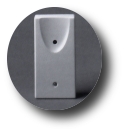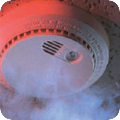Last week, one of the local Evansville radio stations, Hot 96 Morning Show, encouraged listeners to call the station and weigh in on how to keep our schools safe. There was an active member of the military that said schools should allow veterans to stand guard at the doors. Another caller recommended arming teachers. One parent commented that it was just too easy to walk into her child’s school. With all the security measures that are being set in place, do school security systems violate students rights?
No matter where you stand on the remedies of securing our schools, we can all agree on these two points:
- Every young person attending school should have a safe environment to learn
- Staff and faculty should be free to teach and work without the worry of violence
This year, Governor Quinn of Illinois awarded $25 million to Illinois schools to increase school security systems. Governor Pence of Indiana awarded $9 million to Indiana schools for security. This money has been granted to provide equipment from solid doors to IP cameras. There are many misconceptions about cameras, security systems and other security solutions. Having a community “pow-wow” can relieve some of those worries. Here are some talking points:
IP Cameras
Possibly the biggest complaint regarding school security systems are that cameras violate students rights. Students can feel like they are being watched with someone waiting for them to make a mistake. However educating parents, teachers, staff and even students about the cameras can quell the mixed emotions.
- Cameras are a deterrent – It’s a common fact, that if someone thinks they are being watched, they are less likely to commit an act that will result in a disciplinary action. Remind everyone that these aren’t secret cameras. They will be placed around the school in key areas to prevent mischief.
- Confirmation of good conduct – While it is true that bad conduct will be caught on tape, it can also show of good behavior. The only thing worse than being wrongfully accused of a crime is being punished for that crime! A camera can confirm who was involved in an incident and the extent to which they were involved.
- Property safety – When school property is burglarized or vandalized, repairs waste valuable time and district funds that could be working for students. Some school property is the result of countless hours of volunteering by staff, parents and students. When this property is destroyed it’s disheartening for those who have worked so hard to help support their school. And when it’s personal property, whether it’s a staff members wallet or a student’s phone, the hurt is multiplied by 100 times! Cameras are there to catch someone doing wrong. Hopefully, by identifying the wrong doer, any stolen property can be returned. There is no stopping every vandal. But making an example out of one, will be a deterrent for others.
 Access Systems
Access Systems
Access doors can be added to school security systems to minimize unwanted visitors while school is in session. These systems, by law, DO NOT LOCK STUDENTS INSIDE THE SCHOOL. All doors must be unlocked from the inside should a fire or other emergency occur. Access systems will lock down the outer perimeter of the school. All visitors must enter through the front door. With the school locked down to outside foot traffic, school personnel can carefully monitor who enters the school. Most schools require parents to send in a form at the beginning of the year with the names of who can pick up their children. Having visitors show photo identification and sign a visitor log, confirms to parents that ONLY people they authorize can sign their children out of school.
 School Security Systems with Verified Audio
School Security Systems with Verified Audio
“But they can hear inside the school!” Many districts are adding verified audio to their school security systems because of the ability to provide schools with 100% coverage. Audio systems also help law enforcement by reducing false alarms caused by animals and inanimate objects. However, some may see this as “listening in”. To prevent this misconception, here are a few points you may want highlight:
- Audio Systems must be activated to hear inside the school. The system must be armed and “tripped” for the audio to turn on. So someone has to make a noise like break a window, or come through a door, while the system is armed for operators to hear inside the building. The audio will also be activated by a panic button. Every panic alarmed is treated like the user is in immediate trouble! When a panic button is pushed, police are dispatched without delay.
- Operators cannot turn on the audio sensors or listen inside without an activation. Verified audio systems must be activated for operators to hear inside the building.
If you know a school that is looking into options on how to further secure staff and students, please contact us to set up a free demonstration.












 School will be out soon! Summer will be here and the halls once filled with the voices of children will be silent.
School will be out soon! Summer will be here and the halls once filled with the voices of children will be silent. Audio Sensor
Audio Sensor Door Contacts
Door Contacts Smoke Alarm
Smoke Alarm Heat detectors
Heat detectors




